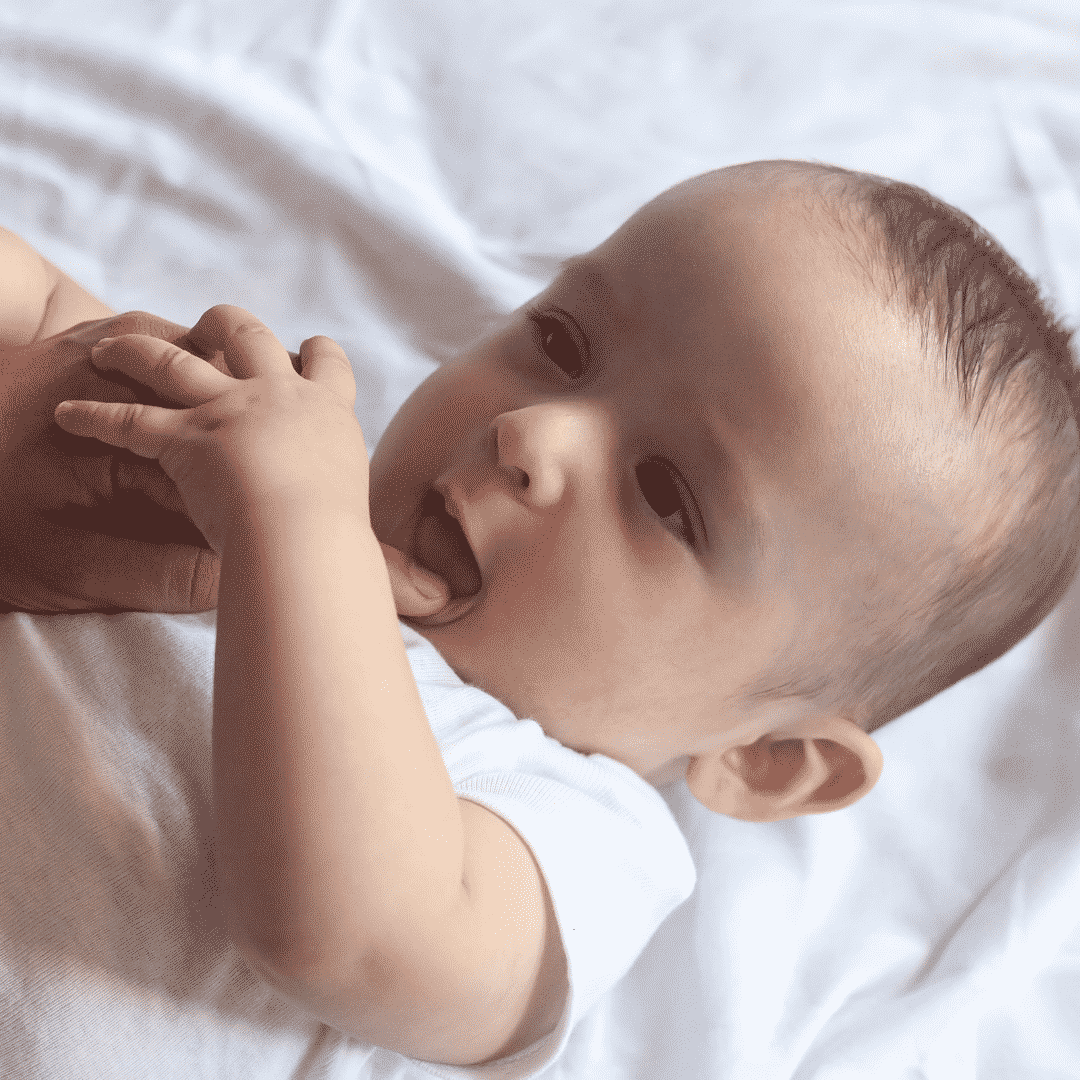You may have noticed recently that your young baby is grinding his teeth, despite the fact that there are only a few of them?
Definition
Bruxism in children is most often characterized by teeth grinding secondary to uncontrolled or unconscious movements or clenching of the jaw or mandible. Bruxism means overloading the jaw joint.
Parents may notice bruxism as soon as their baby teeth come through, or later.
It’s estimated that around 50% of babies will grind their teeth at least a few times a week, especially during teething, and this percentage decreases over time to around 14% in children aged between 5 and adolescence, and 8% in adulthood.
The appearance of bruxism
The origin of bruxism lies in the nerve centers of the brain. As young children are still immature, they may be more affected by these involuntary contractions, especially during sleep, and more specifically during deep sleep. We also note that the transition between the two sleep phases, from deep sleep to lighter sleep with micro-arousals, is marked by increased brain activity, increased heart rate and greater muscle tone. These observations could explain, at least in part, the involuntary movements of the baby’s jaw and, possibly, other muscular contractions in the body, such as in the legs and arms. These squeaking episodes may last only a few seconds, but may be repeated several times in a single night, and may be very intense.
Bruxism often appears in babies during teething, but it has no medium- or long-term consequences, as it usually resolves spontaneously.
Types of bruxism
The involuntary movements of bruxism can take 4 different forms. These are clenching, grinding, rocking and tapping.
.
Clenching
Jaw clenching is silent, involuntary and more often seen during the day. It occurs when muscular force is exerted from the upper to the lower jaw, on the vertical axis of the teeth. There is no jaw movement at this level; everything happens in the tone, in the musculature, in the internal ligaments. Jaw clenching is more noticeable in times of great stress.
It’s the duration and intensity of this muscular force applied day after day that can, over time, damage the teeth themselves and cause other secondary discomforts.
Grinding
Grinding, unlike jaw-clenching, makes noise. This noise is generated by teeth rubbing against each other. We’re talking here about moving the teeth of the upper and lower jaw back and forth.
Parents are often the first to realize this and ask whether if it’s normal for their young children.
Grinding is more harmful than clenching, since it exerts pressure by moving the jaw, tooth against tooth. The result can be pain, tooth wear and the appearance of sharp wounds.
Rocking
Sometimes bruxism manifests itself as swaying. The jaw doesn’t move, and even if the teeth remain clenched, there may be small, unintentional back-and-forth movements of the teeth.
Again, over time, this process can weaken the dentition and lead to a variety of symptoms later on.
Tapping
Although less frequent, tapping is still a form of bruxism, characterized by chewing and swallowing movements accompanied by contact between the teeth when not eating.
More often encountered at night, tapping is linked to involuntary contraction of the masticatory muscles in particular.
Possible causes of bruxism
The causes of bruxism are not yet fully understood, as many factors can contribute to it, but one thing is certain: stress and anxiety tend to increase the phenomenon.
Abnormal tooth alignment, an inability to relax at night, diet and sleep quality are also factors to be taken into consideration in the medical evaluation of bruxism in children.
Bruxism treatment
In the majority of cases of bruxism in babies, the problem resolves itself spontaneously over time. However, parents are always in the best position to see whether the phenomenon seems to attenuate over time or, on the opposite, become more severe.
Since bruxism is caused by involuntary movements, especially at night, it’s difficult to avoid with good will alone, and even more in young children. Compared to adults, there are few solutions to bruxism, since the mechanisms involved are different in children. That’s why we can’t transpose care alternatives from one to the other. A well-established bedtime routine, combined with relaxation activities, can help reduce the stress of the day and anxiety.
Parents are encouraged to observe their child, note the details and see if the frequency and intensity of grinding increases over time. After the appearance of permanent teeth, don’t hesitate to consult a doctor if the problem persists, in order to obtain the necessary support. However, there is no medication to prevent bruxism in either children or adults.
Marie Fortier
The baby expert
To continue your reading, check out those articles:
And watch those videos:
- Baby’s sleep
- Cleansing a baby’s airways (french only)
- Newborn discomfort


